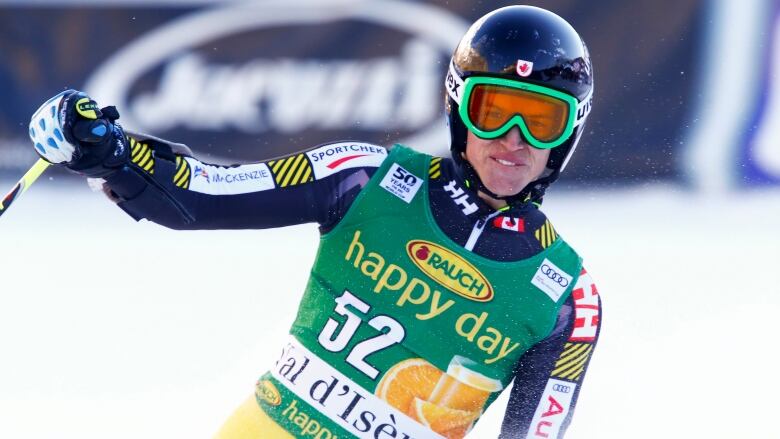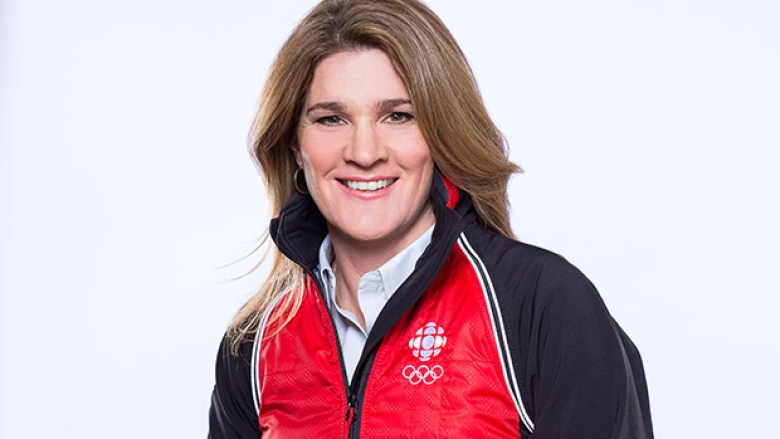Athletes shouldn't have to pick between school and sports
Olympians are finding more opportunities to pursue education

With students across the country getting back in the classroom this week, it's worth considering how school and winter sports remain mostly exclusive concepts.
The reason is fairly obvious university schedules and a winter athlete's competitive season generally clash. And summer school isn't really a viable option, particularly for snow-sport athletes who need to travel to the southern hemisphere during that time of year for on-snow training.
As a result, most athletes are forced to defer their education or study ad hoc by picking up courses where they can.
"When I was skiing, finishing high school while skiing was nearly impossible," says 1992 Olympic downhill gold medalist Kerrin Lee-Gartner. "We had to lug around correspondence courses and mail in our homework. But times have changed, and there are more routes to excellence than ever before."
Indeed, Canada's Erik Read is a prime example of a growing trend in alpine skiing the high-performance student-athlete.
Taking a cue from his teammate Trevor Philp, a 2015 graduate of the University of Denver, Read decided to pursue both his education and his Olympic dream simultaneously. He enrolled at Denver's Daniels School of Business, majoring in finance with a minor in marketing. Last year, while balancing school and ski racing, Read found a career resurgence, tallying up his best World Cup results.
Now he's poised to represent Canada at the upcoming Winter Olympic Games, and is taking a break from his studies to ensure he makes it.
"I want to be successful in my ski racing career, but I also know that it's important to consider a life after racing," Read says. "I'm glad I did it because it allowed me to find balance."
Pros and cons
Read is part of a growing base of Canadians skiing for both U.S. schools and Canada's national alpine program.
"The programs at the top NCAA schools are incredible, on and off snow," says Lee-Gartner. "However, there are some major rules and restrictions that limit a complete high-performance program for winter athletes. The drawback is the limited access to summer training and, unfortunately, national team programs haven't always been designed for athletes in these programs."

Creating training environments for high-performance student-athletes requires a flexibility that hasn't always been a strength of the Canadian Olympic sports system. With such a strong emphasis on winning medals, a holistic approach to include athlete education simply isn't the priority.
Some sports benefit from being facility-based (like speed skating) or having clearly established university pathways (like hockey), but it has long been more common for snow-sport athletes to postpone school than to navigate balancing travel and high-performance expectations with term papers and exams.
Moreover, a national sport organization isn't always willing to work with athletes who are not fully compliant with the national training programs.
It was only one Olympic cycle ago that Mathieu Giroux and Speed Skating Canada butted heads over his choice to pursue his doctor of pharmacy degree at the University of Montreal. The organization temporarily cut the 2010 Olympic gold medallist's funding because he insisted on training in Montreal (so he could pursue his education) instead of relocating to the national-team training facility in Calgary.
Room to grow
But kudos to Alpine Canada, which is redefining the norm. It's far easier to cast out the athletes who fail to conform to a structured system than to adjust policies to include them.
Another encouraging sign is the partnership between the Canadian Olympic Committee and the Smith School of Business at Queen's University.
But as more athletes like Giroux and Read push for a different journey to the top of the podium, the sports pathway from playground to podium still has room to broaden.
"I hope Erik is a catalyst, another athlete to break through to show that going to school and racing can be done,"says Lee-Garner. "It's an opportunity for our system to show going to school can produce better athletes."
Let's hope so. The potential for our athletes to leave their sporting careerswith an education has never been better. It's now incumbent on our sports system to pivot its values to ensure athletes get the support they need.












_(720p).jpg)


 OFFICIAL HD MUSIC VIDEO.jpg)
.jpg)



























































































